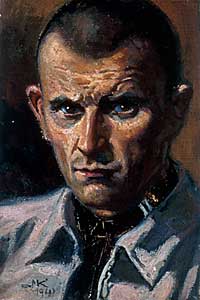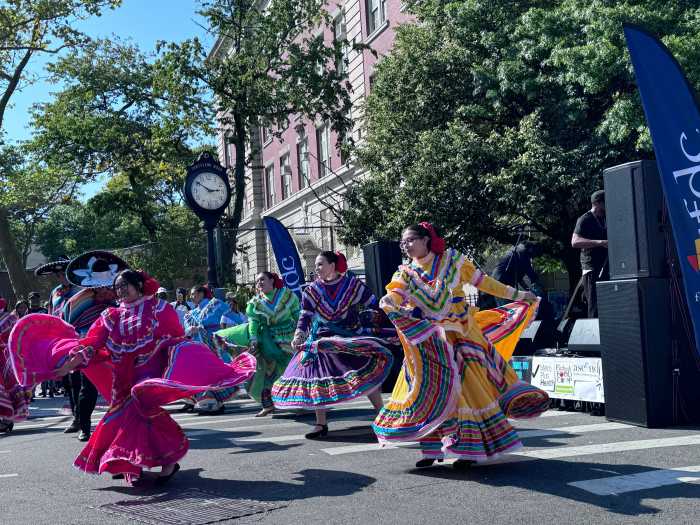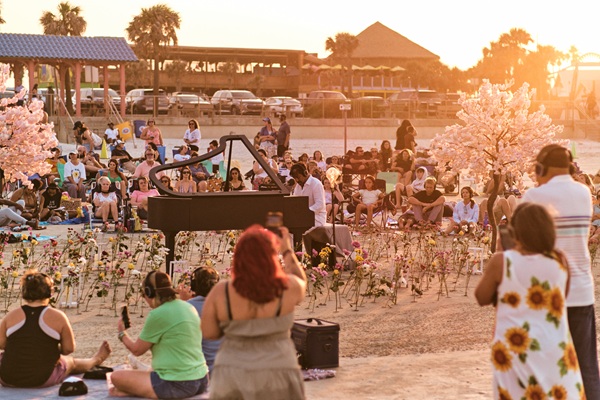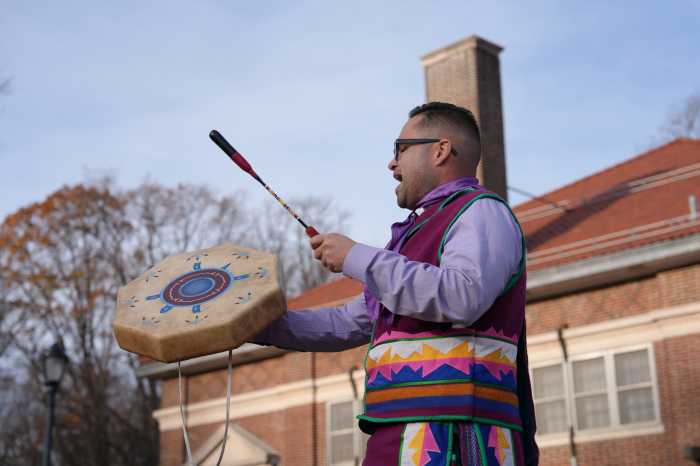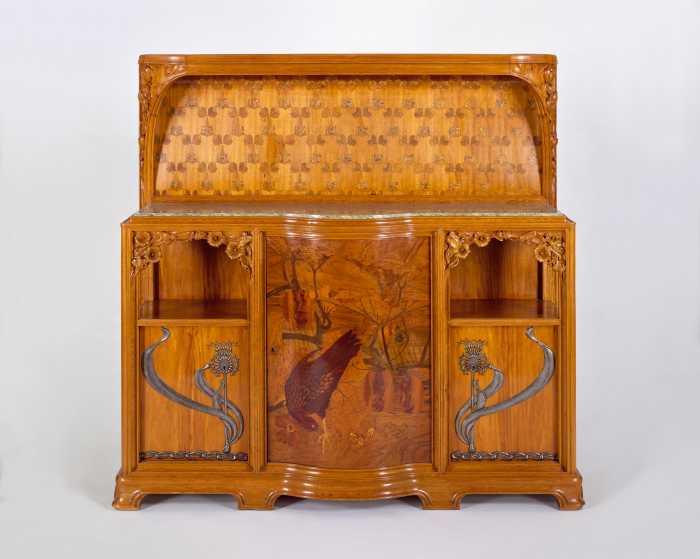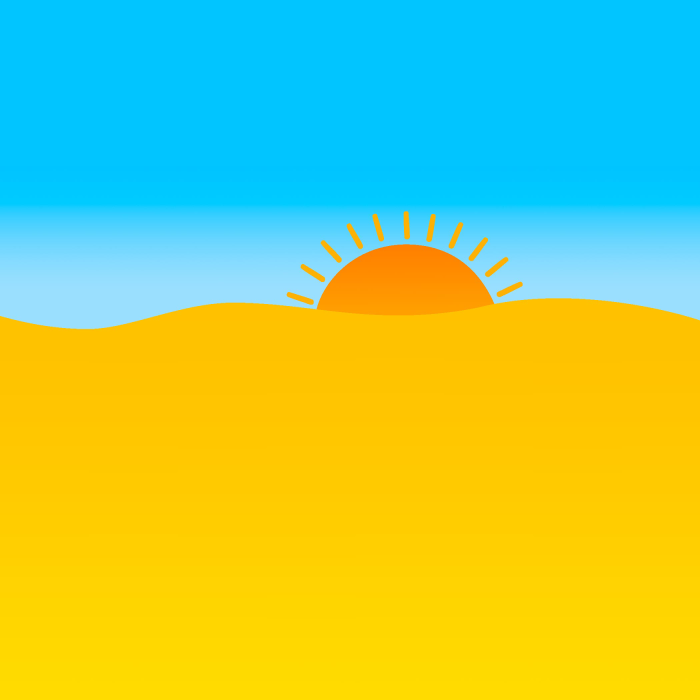The Brooklyn Museum of Art’s new exhibition,
"The Last Expression: Art and Auschwitz," accomplishes
the breathtaking feat of bringing to the fore the unimaginable
horrors of the Holocaust while simultaneously celebrating the
resilience of the victims who, through art, tried to document,
rise above or resist the atrocities they suffered.
The exhibition rooms are filled with paintings and sketches drawn
by Holocaust victims. Many of the salvaged works are made from
crude materials like folded cardboard, others drawn in small
sketchbooks and some even on canvas. Some are made by trained
artists and some by people who craved this form of expression.
"To a certain degree the exhibition challenges notions of
an art museum," explained Flatbush native David Mickenberg,
curator of the exhibition and director of the Davis Museum and
Cultural Center at Wellesley College. "Certainly there are
some well-trained, important artists in the exhibition – Felix
Nussbaum has a museum dedicated to his works in Germany, Friedl
Dicker-Brandeis is an important artist and well-trained, Mieczyslaw
Koscielniak is one of the important artists of mid-20th century
in Poland, and Jozef Szajna came out of Auschwitz and Buchenwald
and became one of the most renowned Polish directors," said
Mickenberg. (The museum is trying to arrange a visit from Szajna
in June.)
"So there are, definitively, people here who were well trained
and continued to be or became renowned artists in the field,
but there are artists here who are not artists, who were not
trained, who took up pen and paper and brush in order to survive
and in order to document and in order to resist, or for any number
of reasons one of the things the exhibition addresses is the
role of art in cultures in times of great political and social
duress."
Previously exhibited at Northwestern University and Wellesley
College, this is the last stop of the "Last Expression"
tour, which was organized by the Mary and Leigh Block Museum
of Art at Northwestern.
Mickenberg lauded Marilyn Kushner, curator and chairwoman of
the department of prints, drawings and photographs at the Brooklyn
Museum, for the additional research she did to flesh out the
identities of the individual artists and to put the artwork in
context.
"The exhibition has been different in every location and
in Brooklyn it looks particularly stellar in the information
it communicates and the way it is installed," said Mickenberg.
Kushner explained her philosophy on mounting the exhibition.
"I did a lot of research to put each drawing into context,
because I was looking at a drawing and I said, ’Who was that
artist, what are they depicting, and how did that fit into the
experience at Auschwitz? How did it fit into the history of the
Holocaust?’ Art can’t be seen in a vacuum," said Kushner.
"It’s part of a social network."
The Brooklyn Museum augments these works with interactive computer
kiosks that display works too fragile to handle, an extensive
reading room with many texts in addition to the catalogue, and
archival film footage.
Visitors can sit on a large couch covered with an army barracks-style
blanket while watching the film, "Nazi Concentration Camps"
(1945), directed by George Stevens. Stevens, who went on to direct
"The Diary of Anne Frank" (1959), assembled this official
documentary report from footage taken March 1-May 8, 1945.
The black-and-white film, which the museum has labeled with a
caution against allowing children to view its explicit footage,
was made under orders from Allied Commander Gen. Dwight Eisenhower.
The resulting film, documenting the camps as they were "liberated,"
shows innumerable nude, emaciated, lifeless bodies with shorn
heads in heaps, and in wood carts, too many to bury. They are
filmed being shoveled into mass graves with bulldozers. There
are tight shots of faces crawling with insects, their mouths
open in silent screams.
The bits of narration reveal a litany of Nazi atrocities: sickness,
starvation, abuse, murder, medical experimentation, crematoriums
and gas chambers made to look like shower stalls. Victims’ clothing
hangs outside the "showers" as if their owners were
going to return for them at any moment.
Exposed are the numbers tattooed on their arms, replacing their
names and ethnicities – their very identities. The bodies seem
even more skeletal when compared to the buxom, well-fed female
guards who are forced to bury the dead after the American liberation
of the camps.
At the Ohrdruf camp, inmates demonstrated the rack used to torture
them, and near a forest, a "crude woodland grill" is
discovered, where inmates were burned out in the open.
The artwork in "The Last Expression" gives but a glimpse
of the atrocities Holocaust victims suffered, but it is striking
evidence that the victims used art to maintain their identities
as well as to document the horrors they experienced daily.
The works hang in maize-and-brown-colored rooms that have been
designed by Matthew Yokobosky. The enormous wood beams overhead
and painted fences and train tracks hint of the stifling sensation
of being corralled into a concentration camp.
The more than 200 works of art were created at the Auschwitz,
Buchenwald, Gurs and Drancy concentration camps, and in ghettos
such as Lodz and Theresienstadt, yet each artist in the exhibition,
whether from Poland, Czechoslovakia, Belgium, Austria or Germany
is bound by the common tie that each was incarcerated or murdered
at Auschwitz.
Mickenberg said the works were scrupulously researched and all
can be said to be "au courant at the time of the Holocaust."
"The more research we did and the more scholars we talked
to in the field, the more we wanted this exhibition to be completely
undeniable and not be affected by issues of memory," said
Mickenberg. "Therefore we chose the dates 1941-1945 for
works of art to be put in the exhibit.
"We didn’t want anybody to look at this exhibition and say
that something wasn’t accurate because [the artists] were remembering
how it was five years later," he said. "We didn’t want
anybody to deny the accuracy or truth of what’s being included
in the exhibition based on distance in time and what the effects
of memory would be on the actual representation of a given scene
or an object or a person."
In the exhibition, the works are grouped according to subject
matter: portraiture, art made on command by a Nazi officer (Auschwitz
was one of the few camps that had an art studio and museum),
prisoner experiences, satire and illustration.
The works cover a range of subjects. A poster warns of the deadly
typhus epidemic at the camp. Lice carried typhus, and Mieczyslaw
Koscielniak’s gripping poster, a color linoleum cut, in its scuffed
wood frame, warns that one louse means death in blazing red letters
next to a skull and menacing insect drawn in equal size. On the
one hand, the artist’s skill is evident, on the other hand, the
poster tells of the indescribable filth and degradation the prisoners
had to endure.
Koscielniak’s "A Friendly Favor" (1943), is crayon
on cardboard, showing two men carrying a collapsed man between
them. The curators write that a drawing with this subject matter
would have been forbidden.
Waldemar Nowakowski’s small watercolors on cardboard document
in impactful, graphic illustrations the brutally masochistic
methods of torture and murder the inmates witnessed.
Some artists used their art to escape their reality. Zofia Stepien-Bator
created romanticized portraits of the other prisoners with stylish
hair and clothes. With her small gesture of resistance, she created
a flattering "Portrait of Mala Zimetbaum" (1943) with
crayon on cardboard. The artist imagines Zimetbaum with her head
held high, with a fashionable hairstyle and civilian clothing
instead of prisoner’s stripes.
Both curators agree that because Holocaust survivors are aging,
it’s urgent that research and oral histories are gathered before
it’s too late.
On the opening night of "The Last Expression," Holocaust
survivor Frederick Terna, who lives on Washington Avenue with
his wife, Rebecca, came to see the exhibit and give a few remarks
to the members. Terna, whose work is not part of the exhibition,
said that although the art on display could only render "a
tiny facet of the horror," he considered the displayed artifacts
of vital importance for the survival of civilization.
"The works shown here go beyond the traditional scope of
art," said Terna. "The work of these artists is testimony,
commentary and also a warning.
"What is their message? There is no value higher than a
human life. We are all responsible for each other. And we have
to strive for an open, fair and just community if we want to
avoid a reoccurence of this."
"The Last Expression: Art and Auschwitz" will
be on display at the Brooklyn Museum of Art (fifth floor, 200
Eastern Parkway at Washington Avenue in Prospect Heights) through
June 15.
The museum has also organized dance, music and film performances
to complement the exhibition.
Admission is $6, $3 students with valid ID and an adult and free
children under 12. For information about museum hours and upcoming
events, call (718) 638-5000 or visit the Web site at www.brooklynmuseum.org.
For more information about the exhibit, go to http://lastexpression.northwestern.edu.


